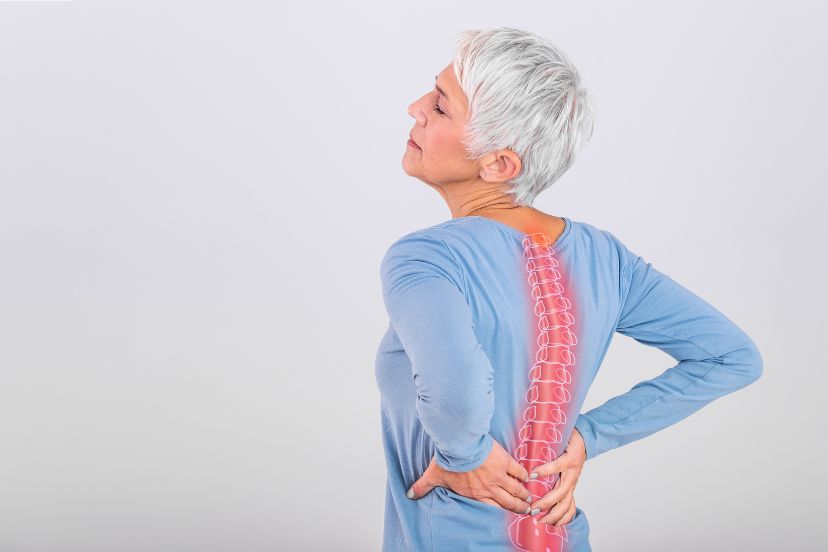Postmenopausal Osteoporosis: Understanding the Silent Thief of Bones
Introduction: The Unseen Danger Lurking Within
Welcome to this informative journey through the world of postmenopausal osteoporosis. As women enter menopause, they face a unique challenge that goes beyond hot flashes and mood swings. Postmenopausal osteoporosis silently weakens bones, making them prone to fractures and breaks, significantly impacting the quality of life. This article aims to shed light on this often-overlooked health concern and empower you with the knowledge to protect your bones and lead a healthy, active life.
Postmenopausal Osteoporosis
Postmenopausal osteoporosis is a condition that affects women after they reach menopause, typically in their 50s or 60s. During menopause, the body’s estrogen levels drop significantly, leading to accelerated bone loss and reduced bone density. This condition can make bones more fragile and susceptible to fractures, even with minor falls or bumps.
Causes of Postmenopausal Osteoporosis
Postmenopausal osteoporosis is primarily caused by hormonal changes that occur during menopause. Estrogen, an essential hormone for maintaining bone density, decreases after menopause, resulting in a higher rate of bone resorption than formation. Additionally, other factors can contribute to osteoporosis, such as:
- Age: The risk of osteoporosis increases with age, particularly after menopause.
- Family History: A family history of osteoporosis can elevate the risk of developing the condition.
- Lifestyle Choices: Sedentary lifestyle, excessive alcohol consumption, smoking, and a diet low in calcium and vitamin D can all contribute to bone loss.
- Body Size: Individuals with smaller body frames may have a higher risk of osteoporosis.
- Medical Conditions: Certain medical conditions and medications can increase the risk of bone loss.
Symptoms of Postmenopausal Osteoporosis
Postmenopausal osteoporosis is often called the “silent thief of bones” because it can progress without noticeable symptoms until a fracture occurs. However, some common signs may include:
- Bone Pain: Dull or aching pain in the bones or muscles.
- Loss of Height: Gradual loss of height over time due to compression fractures in the spine.
- Fractures: Increased susceptibility to fractures, particularly in the wrists, hips, and spine.
- Poor Posture: A stooped posture or curvature of the spine (dowager’s hump).
Diagnosing Postmenopausal Osteoporosis
Early detection of postmenopausal osteoporosis is crucial for effective management. Your healthcare provider may recommend the following diagnostic tests:
- Bone Density Test (DEXA Scan): This painless test measures bone mineral density and assesses the risk of fractures.
- X-rays: X-rays can identify fractures and evaluate bone health.
- Blood Tests: Blood tests can rule out other medical conditions that might be affecting bone health.
Preventing Postmenopausal Osteoporosis
Prevention is key to reducing the risk of postmenopausal osteoporosis. Here are some actionable steps you can take:
- A Balanced Diet: Ensure you consume a diet rich in calcium and vitamin D. Include dairy products, leafy greens, nuts, and fortified foods in your meals.
- Regular Exercise: Engage in weight-bearing exercises like walking, dancing, or weight lifting to strengthen bones.
- Avoid Smoking and Excessive Alcohol: Both smoking and excessive alcohol intake can accelerate bone loss. Avoid them to protect your bones.
- Hormone Replacement Therapy (HRT): In some cases, hormone replacement therapy may be prescribed to manage hormonal imbalances.
Treatment Options for Postmenopausal Osteoporosis
If you have been diagnosed with postmenopausal osteoporosis, your doctor may recommend the following treatments:
- Medications: Several medications are available to slow down bone loss and reduce the risk of fractures.
- Calcium and Vitamin D Supplements: Supplements can help bridge the nutritional gap and support bone health.
- Lifestyle Modifications: Quitting smoking, reducing alcohol intake, and adopting a healthy lifestyle can complement medical treatments.
FAQs About Postmenopausal Osteoporosis
-
What is the main cause of postmenopausal osteoporosis?
Postmenopausal osteoporosis is mainly caused by the decline of estrogen levels after menopause, leading to accelerated bone loss.
-
At what age does postmenopausal osteoporosis typically occur?
Postmenopausal osteoporosis usually occurs in women in their 50s or 60s, shortly after reaching menopause.
-
Can men develop postmenopausal osteoporosis?
While postmenopausal osteoporosis primarily affects women, men can also develop osteoporosis, although it is less common.
-
Can postmenopausal osteoporosis be prevented through diet alone?
While a balanced diet rich in calcium and vitamin D is essential for bone health, other factors like exercise and lifestyle choices also play a significant role in prevention.
-
Is postmenopausal osteoporosis reversible?
Postmenopausal osteoporosis is treatable and manageable, but reversing bone loss entirely may not be possible.
-
Can exercise help improve bone density in postmenopausal women?
Yes, regular weight-bearing exercises can help strengthen bones and improve bone density in postmenopausal women.
Conclusion: Empowering Bone Health
In conclusion, postmenopausal osteoporosis is a serious health concern that affects many women worldwide. However, armed with knowledge and proactive measures, you can take control of your bone health and reduce the risk of fractures and complications. Remember to follow a balanced diet, engage in regular exercise, and avoid harmful habits like smoking and excessive alcohol consumption.
Regular check-ups with your healthcare provider, bone density tests, and timely interventions can make a significant difference in preventing or managing postmenopausal osteoporosis. By investing in your bone health now, you can build a strong foundation for a healthier and more active future. So, take charge of your bones and embrace life with strength and confidence even after menopause!




